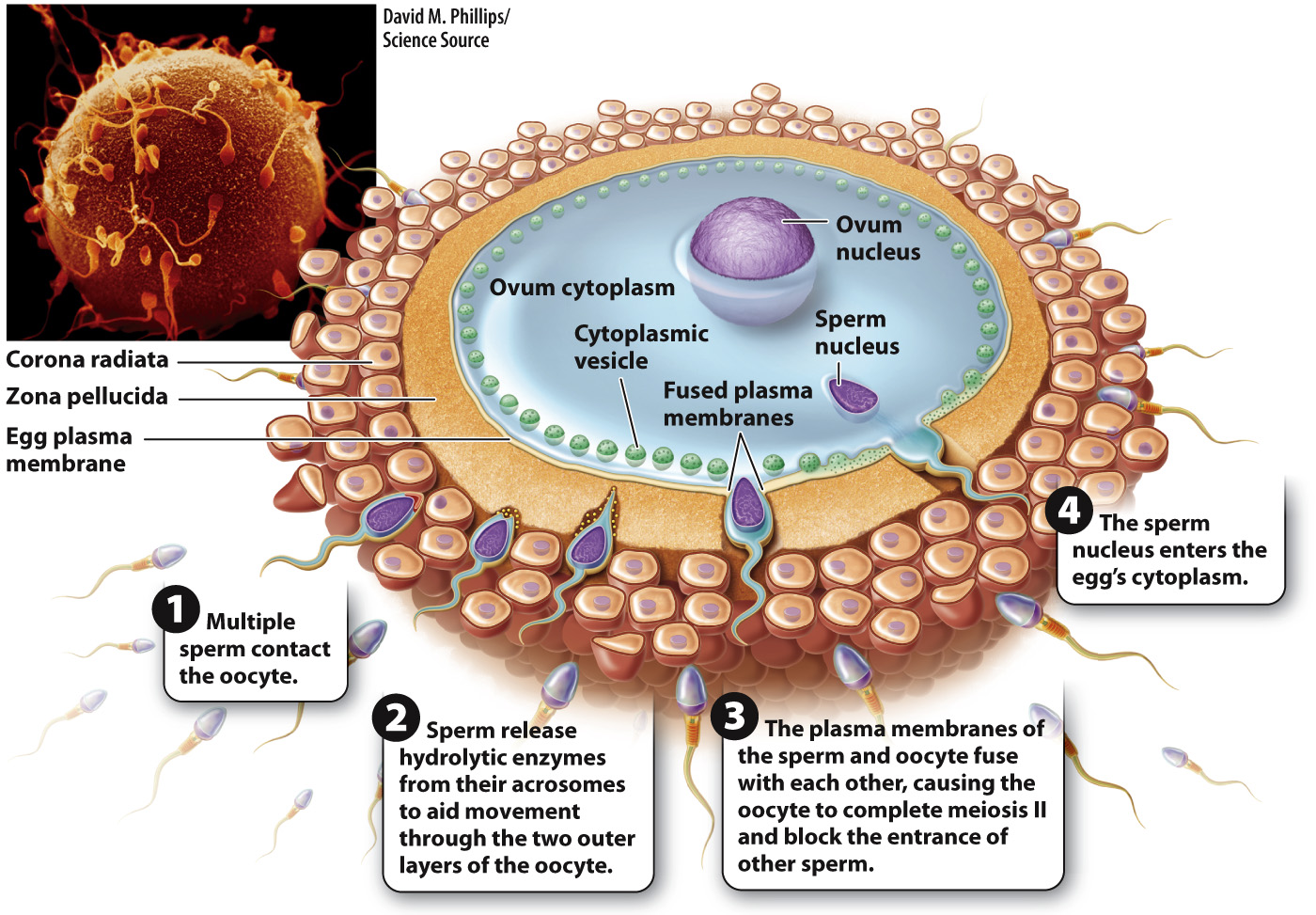Fertilization occurs when a sperm fuses with an oocyte.
912
Fertilization involves the fusion of gametes, thus restoring the diploid chromosome content (Fig. 42.20). In humans, male and female gametes are usually brought together by sexual intercourse. Sexual arousal leads to a host of physiological changes, including erection of the penis and erection of the clitoris and lubrication of the vagina. The erect penis is inserted into the vagina until orgasm occurs. Orgasm is characterized by feelings of pleasure and contractions of the pelvic muscles. In males, it is usually accompanied by ejaculation, in which semen, containing sperm, is delivered into the vagina.

Sperm travel through the cervix and into the uterus and fallopian tubes. Fertilization usually occurs in one of the fallopian tubes. As a result, many of the details of how sperm travel through the female reproductive tract are poorly understood. Sperm are motile, but from studies of the time it takes sperm to reach the fallopian tubes, it appears that the female reproductive tract plays an active role in moving sperm to the oocyte, for example through muscular contractions.
In the female reproductive tract, sperm undergo capacitation, a key developmental step that is unique to mammals. Capacitation is a series of physiological changes that allow the sperm to fertilize the egg. These changes include alterations in the fluidity of the plasma membrane, loss of some surface membrane proteins, and changes in the charge across the membrane, called the membrane potential (Chapter 35). As a result, sperm show increased motility.
In many species, the oocyte releases soluble molecules, creating a concentration gradient that guides the sperm to the oocyte. On reaching the oocyte, the sperm passes through two layers—
After passing through the layers surrounding the ooctye, the plasma membranes of the sperm and oocyte fuse (Fig. 42.20). The oocyte then completes meiosis II and undergoes changes that prevent polyspermy, or fertilization by more than one sperm. These mechanisms are classified according to how quickly they act and have been extensively studied in sea urchins. The first line of defense, or fast block to polyspermy, is caused by changes in the membrane potential of the egg, which is usually negative but quickly becomes positive on fertilization. The fast block is quick but temporary and does not occur in mammals.
913
There is also a second, more stable defense, or slow block to polyspermy. In this process, vesicles in the oocyte fuse with the plasma membrane and release their contents, leading to modification of the structure of the zona pellucida in mammals and the vitelline membrane in sea urchins. The fertilized, diploid egg is a zygote—
Although sexual intercourse is one way that gametes are brought together, there are now a variety of other methods to achieve fertilization and pregnancy in humans. These are collectively called assisted reproductive technologies and are typically used to treat infertility. For example, in vitro fertilization (IVF) is a process in which eggs and sperm are brought together in a petri dish, where fertilization and cell divisions occur. The developing embryos are then inserted into the uterus. The first IVF or “test tube” baby was born in 1978, and since then several million babies have been conceived in this way. Assisted reproductive technologies such as IVF have opened the door to pre-